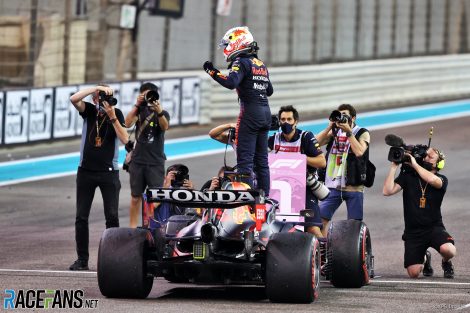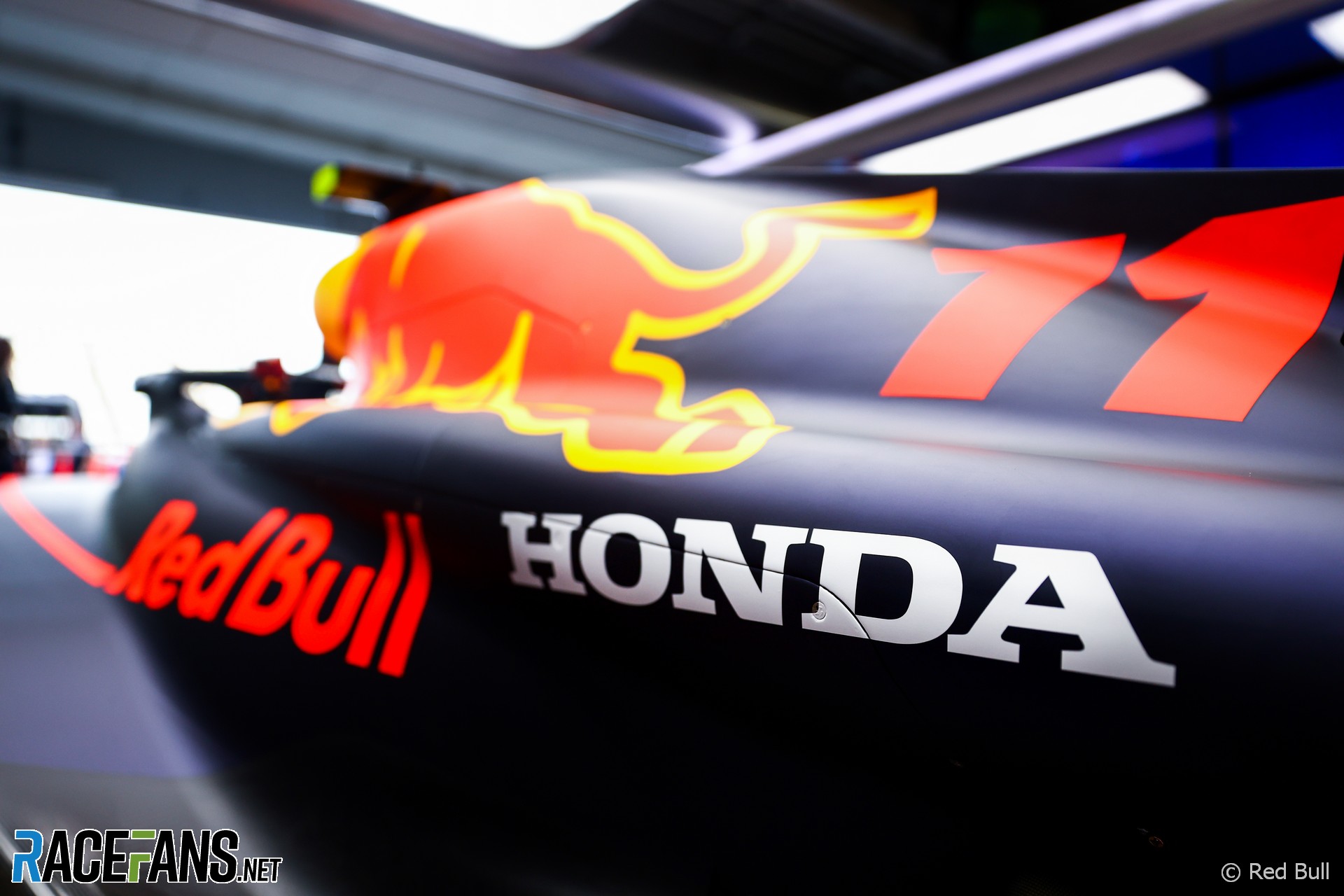Less than a year and a half ago Honda departed Formula 1 on a high by taking Max Verstappen to the 2021 drivers’ championship.
Now Honda has confirmed it will return as a manufacturer when new power unit regulations are introduced in 2026. What’s behind its rapid change of heart over its commitment to F1?Honda had already softened its position by restoring its full branding to the flanks of the Red Bulls, securing its share of the credit for the dominant team’s success. But earlier this year it emerged the the clock was ticking on the tie-up between the two.
Speculation over Honda’s future has been rife since February, when the FIA confirmed it as one of the six power unit manufacturers which had signed up to produce power units for the new regulations. While Red Bull will continue to use the Honda-developed power units until 2025, the world champions confirmed they would develop their new motors for 2026 with Ford.

But what caused Honda to rethink its reasons for leaving F1 in the first place? And does its decision to shut down its F1 engine programme after 2021 put it an immediate disadvantage to the rivals it will face in three years’ time?
Honda announced its intention to leave F1 in October 2020. The manufacturer had returned to the series five years earlier, and after an unsuccessful three-year stint with McLaren found success with Red Bull.
Advert | Become a RaceFans supporter and
But during 2020 Honda decided to end its F1 activities in order to devote more of its efforts to reaching its goal of becoming carbon neutral by 2050. The manufacturer announced it would “funnel its corporate resources in research and development into the areas of future power unit and energy technologies, including fuel cell vehicle (FCV) and battery EV (BEV) technologies, which will be the core of carbon-free technologies.”
F1’s plans for its future engine regulations were not fully formed when Honda made its decision to leave. Since then F1 has firmed up its plans for its next generation of engines, which will be closely based on the current units, but with a greater proportion of their power output generated electrically. They will also be powered by what F1 describes as fully sustainable fuel.
Those changes were exactly what Honda was looking for. “The biggest, key factor for this decision for us this time around was the direction that the new 2026 new regulations is facing towards which is moving towards carbon neutrality,” Honda Racing Corporation president Koji Watanabe told media including RaceFans yesterday. “That direction was matched with our company’s goal moving into the future. That is the decisive key factor.”
While the removal of the MGU-H is likely to mean the 2026 power units are less thermally efficient than those they replace, the enhanced importance of electrical power generation is especially attractive to Honda.
“Currently electrical power accounts for 20% or less as opposed to the internal engine,” said Watanabe. “But the new regulation would require about 50% or more of electrification, which would move even further towards electrification.” Honda believes the knowledge gained through that research will be valuable for future development of electric road vehicles.
F1’s move towards sustainable fuels, which will be trialled in junior series Formula 2 and Formula 3 before 2026, has also been embraced by Honda. “That would require us to really think about how to integrate the new fuel with the internal engine,” Watanabe said. “We also would have to think about how to make the efficiency optimised in order to speed up. And I think that that direction matches with Honda’s direction.”
Advert | Become a RaceFans supporter and
Significantly, F1 is developing the fuels in conjunction with Aramco, an Aston Martin title sponsor. Aston Martin Performance Technologies CEO Martin Whitmarsh said the importance of that connection shouldn’t be underestimated.
“It’s a substantial and probably unspoken technical challenge that’s ongoing at the moment,” said Whitmarsh. “And again, we’re extremely fortunate, I think, to have really the leading exponents in that area with Aramco. So I think that partnership between Honda and Aramco will be very important and very critical.”
Honda has left F1 and returned to the sport more times than any other engine manufacturer. However it says its most recent departure and recent was so brief it will have lost little momentum in development compared to its rivals.
“We have been continuously supplying engines upon request from Red Bull, even for the current Formula 1,” said Watanabe. “So therefore we are still in operation for the ongoing F1 races as well.
“As for the new regulations to be introduced from 2026, we have continuously engaged in elements, studies or the important factors in terms of the power units. So therefore we have not totally withdrawn from our R&D activities.”
Following Honda’s decision to leave, F1 introduced a freeze on the development of its current power units, which came into force at the beginning of last season. Honda has therefore lost little compared to its rival manufacturers, said Watanabe.
Advert | Become a RaceFans supporter and
“In October of 2020 we announced the withdrawal from the F1. So we ended the F1 activities at the end of the 2021 season. But until March of 2022, we have been fully engaged in development of the power units for up until 2022. We had the full headcount still remaining until this time.
£So the development members were still existing until March of 2022. However, then they were allocated to different carbon-neutral projects, so the headcount of the development members started to decrease starting from April 2022.
“However, in April of 2022, a new company called Honda Racing Corporation was established. This is the dedicated company for motorsport races. So this company kept on engaging in the studies and development of four-wheel technologies. We have commenced studies regarding the new regulations. So therefore, we don’t think that we have lost so much regardless of our withdrawal from the F1 race at one point in time.”
When Honda last returned to F1 it did so one year after the introduction of new engine regulations, meaning its rivals had an automatic head start. That won’t be the case this time and the manufacturer is confident its recent departure and return won’t significantly affect its preparations for a return which is still almost three years away.
Bringing the F1 news from the source
RaceFans strives to bring its readers news directly from the key players in Formula 1. We are able to do this thanks in part to the generous backing of our RaceFans Supporters.
By contributing £1 per month or £12 per year (or the equivalent in other currencies) you can help cover the costs involved in producing original journalism: Travelling, writing, creating, hosting, contacting and developing.
We have been proudly supported by our readers for over 10 years. If you enjoy our independent coverage, please consider becoming a RaceFans Supporter today. As a bonus, all our Supporters can also browse the site ad-free. Sign up or find out more via the links below:
Advert | Become a RaceFans supporter and
2023 F1 season
- FIA president cleared of alleged interference in two 2023 races
- First week viewing figures for new Drive to Survive season fall again
- Max who? Drive to Survive season six prefers its favourite faces
- RaceFans’ complete 2023 season review
- The F1 drivers who pulled off the 10 biggest charges through the field in 2023





drmouse (@drmouse)
24th May 2023, 9:14
I still can’t shake suspicions that Honda “left” specifically in order to give RBR more ammunition to get the engine freeze in place. There has always been a correlation between RBRs competitiveness and the dominance of aerodynamic performance. Their last period of dominance was also in an engine freeze period. It suits RBR massively (especially over Ferrari and Mercedes) to limit the development of everything but aero, and given how quickly Honda came back…
I’m not saying it would be wrong if this is what happened: It would have been a very good political move on RBRs part. That said, it’s not one I like, because I enjoy hearing about engine developments more than aerodynamic ones. As I’ve said before, engines are something I know a lot about, whereas I have only a passing knowledge of aerodynamics and it all sounds like “magic” lol.
MacLeod (@macleod)
24th May 2023, 13:43
@drmouse – i think you underestimate the CEO’s of those large companies 1 wanted to quit F1 because of where Honda was planning to go compaired with F1 but a new CEO wishes to enter F1 again but a bit late as Red Bull already had setup their factory and were trying to get a engine partner (Porche) on board when in 2022 Honda decided to return. much too late to get togetheranymore.
SadF1fan
24th May 2023, 12:16
Honda like many companies is run through Adhoc management. Instead of having a clear long term plan and philosophy, they are mostly lead by daily events.
The arguments used for leaving F1 while remaining in Indy were also very poor. Honda wanted to enjoy the greenwashing bandwagon, while remaining in the least green motorsport of the two.
Especially when it comes to F1 Honda’s strategy over the past 20 years has been questionable at best, entering and leaving the sport 4 times and at moments they would have had the possibility to compete for wins and championships.
Jay
25th May 2023, 8:52
You think Indycar emits more waste than global F1? I don’t even think Indycar uses airplanes, they long haul it to each race. Not to mention they only go to 16 cities(Iowa is a double header).
SadF1fan
25th May 2023, 14:13
Im talking about the engines.
And giving their blurp about popularity in the US of F1, their carbon neutrality argument was completely empty, its was simply down to marketing and money.
Alesici
25th May 2023, 16:40
Also, Indycars have been running on biofuel for about 15 years.
Cranberry
24th May 2023, 12:17
Can’t wait to see what the sound of the cars will be like without the MGU-H, perhaps 2025 will be remembered as the final “Roomba Engine” season.
Kevin Krisher (@mikehoncho42)
25th May 2023, 13:13
We can only hope!!
Michael (@freelittlebirds)
24th May 2023, 13:51
If the new regulations are moving fro 20% to 50% engine electrification, you’d think more manufacturers would be knocking on their doors to power the cars. Clearly F1 will lead to trickle-down technologies that can be used to improve manufacturing and yield a competitive advantage.
grat
24th May 2023, 14:50
What, SIX manufacturers aren’t enough for you?
Mark in Florida
24th May 2023, 14:19
2026 Alonso announces that the new Honda engine runs like a golf cart. Can’t wait for the theatrics to start if the engine isn’t on its game right away.
Jere (@jerejj)
24th May 2023, 15:33
F1’s U-turn master.
Kevin Krisher (@mikehoncho42)
25th May 2023, 13:19
Umm if electrification Was 1 of the 2 reasons and it being 50% instead of Twenty why not focus on Formula E? Or is that not an option as nobody really cares about that series??